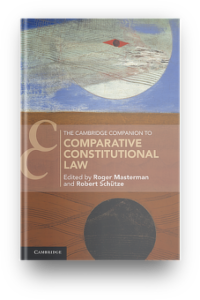In a modern sense, parliaments and constitutions are born together as two essential elements of the liberal state. Both of course had their own ancestors – in royal advisory assemblies and in legal documents binding the monarch in some way, respectively – but both reached maturity together, mutually presupposing and reinforcing. No (modern) constitution could be recognized as such had it not provided for a representative assembly, elected by all the citizens at that time entitled to political rights. Reciprocally, no (modern) parliament could defi ne itself as a political representative assembly without one or more fundamental charters designing its main structural and functional features, attributing to it some prerogatives, and protecting the main political rights of the citizens, such as the freedom of speech, of the press and of meeting and association, in addition, of course, to the right to vote.
The times and the evolutionary paths through which this maturity stage was reached by parliaments and constitutions vary according to the geographical area taken into consideration. In England, as is well known, the evolution started earlier and has progressed (relatively) smoothly since the Middle Ages, without the adoption of a codified constitution, but ensuring the clear recognition of the role of the representative assembly even during the eighteenth century. In North America, instead, both the Constitution and a representative Congress were conceived and implemented as instruments for achieving simultaneously both liberal- democratic government and independence. In continental Europe, this process was even more traumatic: liberal constitutions and representative parliaments were obtained as necessary outcomes of revolutionary events, which took place at the end of eighteenth century within the nation- states and in polemics against the formerly predominant absolute State.
The first two sections of this contribution seek to depict the main structural and functional features of parliaments, as deriving from this evolutionary path and as normally defined by each constitution. First, the main structural features (unicameralism or bicameralism; standing committees; parliamentary groups) will be analysed, then the functional ones (the different classifications of the essential functions of parliaments that have been proposed) will be looked at. Specific attention will be devoted to parliamentary rules of procedure, as they represent a very peculiar and atypical source of law to which the constitutions refer, aimed at ensuring the good functioning of any parliament. They are a bunch of procedural and rational rules, someway ‘codified’ – among others by Jeremy Bentham and Thomas Jefferson – during or just after the two revolutions that took place in France and in North America at the end of the nineteenth century, and then integrated and adapted, according to the features of each parliament and institutional system. They are a way of rationalizing and putting legal limitations and constraints on the political process, when it takes place in parliament and may be seen as part of the joint origins of constitutions and parliaments.
In Section 3 , the chapter analyses, instead, the moments when parliamentarism and constitutionalism diverge. The first crisis of parliaments and parliamentary democracy, particularly in continental Europe, came about when Parliaments were called to be elected by universal suffrage and to thus face the new demands of the working class. In other words, when liberal constitutions were asked to transform themselves into democratic constitutions, the transformation was not always smooth and successful and, especially in the cases of Italy, Germany, Greece, Spain and Portugal, it passed through the tragic experiences of totalitarian or authoritarian regimes (by definition devoid of any representative and freely elected parliament and a constitution in the modern sense). In the middle of this crisis, and at the wake of the rise of the Nazi regime in Germany, an intense debate on the role of parliamentarism took place between two famous legal scholars of the twentieth century: Hans Kelsen and Carl Schmitt. During the twentieth century, it thus became clear that constitutional rights needed to be protected not only by the legislator, which in many cases infringed and violated them on purpose, but also by constitutional courts. These courts tended to be seen – especially by legal constitutionalism theories – as enemies or rivals of parliaments, as they were the only institutions entitled by the legal order to strike down legislative acts; with courts enforcing the principles stated in the (rigid) constitution against the will of the parliamentary majority.
In the conclusions, the opposite reading of political constitutionalism will finally be recalled so as to ponder whether these theories are more consistent with the main trends emerging in the twenty- first century. In fact, it is argued that constitutional adjudication nowadays tends to become, at least in some occasions, a ‘protector’ of parliaments and parliamentary democracy, which has come to be seen as menaced by globalization, populism and direct democracy (empowered by the technological evolution). And because constitutional courts, in doing so, are also protecting themselves, this indeed might be a further demonstration of some kind of persistence (or revival) of the genetic alliance between parliaments and constitutions.
